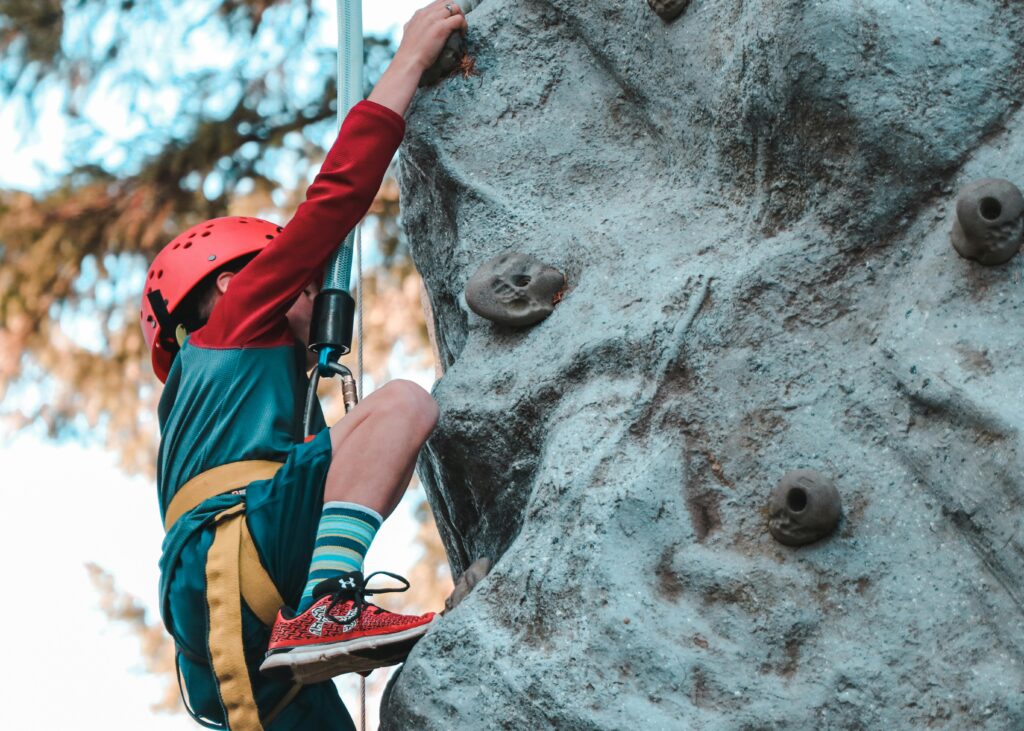
Introduction
Rock climbing is an exhilarating sport that combines strength, technique, and mental focus. Whether you’re a beginner or an experienced climber, improving your climbing techniques can help you ascend more efficiently and with greater confidence. In this guide, we’ll cover essential rock climbing techniques to elevate your skills.
|
1. Footwork: The Foundation of Climbing
Many climbers focus on their upper body strength, but good footwork is the key to efficiency. Proper foot placement reduces fatigue and improves stability.
\
Key Footwork Techniques:
- Edging: Placing the edge of your climbing shoe on small footholds for better support.
- Smearing: Pressing the rubber of your shoe against the rock when there are no clear footholds.
- Heel Hooking: Using your heel to grip an edge or hold, helpful for overhangs and bouldering.
- Toe Hooking: Engaging your toes to pull against a hold, useful for advanced movements.
|
2. Body Positioning and Balance
Maintaining proper body positioning conserves energy and improves movement efficiency.
\
Key Positioning Tips:
- Keep Your Hips Close to the Wall: This improves balance and reduces strain on your arms.
- Use Opposing Forces: Pressing against holds in opposite directions (push-pull) helps maintain stability.
- Flagging: Extending a leg to counterbalance and prevent unnecessary twisting.
- Twist Lock Technique: Rotating your body to reach holds without overextending your arms.
|
3. Grip Techniques and Handholds
Different handholds require different grips. Knowing how to use them effectively can save your grip strength for longer climbs.
\
Common Grip Techniques:
- Crimp Grip: Using the fingertips with the thumb wrapped over for small edges.
- Open Hand Grip: Keeping fingers slightly curved, reducing strain on tendons.
- Pinch Grip: Gripping holds between fingers and thumb for wide or rounded holds.
- Sloper Grip: Engaging an open-handed grip on large, rounded holds with body tension.
|
4. Dynamic vs. Static Movements
Understanding when to use dynamic or static movements can make your climbing more efficient.
\
When to Use:
- Dynamic Moves (Dynos): Explosive jumps or reaches to grab a hold that’s out of static reach.
- Static Moves: Controlled, deliberate movements that conserve energy and reduce risk.
- Deadpointing: A mix of both, where you time your movement to grab a hold at the perfect moment of weightlessness.
\
5. Breathing and Mental Focus
Climbing isn’t just physical—it’s also a mental game. Proper breathing and focus can help you stay calm and make smarter decisions on the wall.
\
Mental and Breathing Strategies:
- Breathe Regularly: Avoid holding your breath; exhale during difficult moves.
- Stay Relaxed: Tension wastes energy; keep your movements smooth and controlled.
- Route Reading: Analyze the climb before starting to anticipate difficult sections.
- Visualizing Success: Picture yourself completing the climb to boost confidence.
\
6. Resting and Recovery Techniques
Knowing how and when to rest on a climb prevents burnout and maximizes endurance.
\
Effective Resting Strategies:
- Shake Out Hands: Switch arms periodically to reduce pump.
- Find a Rest Position: Use large holds, knee bars, or stemming to take pressure off your arms.
- Use Passive Holds: When possible, let skeletal structure take the load instead of muscle tension.
\
7. Training for Climbing
Improving strength and endurance off the wall translates to better climbing performance.
\
Training Methods:
- Fingerboard Training: Builds finger strength for small holds.
- Core Workouts: Strengthens your midsection for better body tension.
- Leg and Hip Flexibility: Helps with high steps and heel hooks.
- Grip Endurance Exercises: Prevents forearm fatigue during longer climbs.
\
Conclusion
Rock climbing is a dynamic sport that requires a mix of strength, technique, and mental focus. By mastering essential climbing techniques like footwork, grip positioning, and efficient movement, you’ll climb stronger and smarter. Keep practicing, stay patient, and most importantly—enjoy the climb!
What’s your favorite climbing technique? Let us know in the comments!

Pingback: History of Urban Climbing: From Underground to Mainstream - gearyourgrip
Pingback: Top Climbing YouTubers to Follow in 2025 - gearyourgrip
Pingback: Climbing Books to Read in 2025 - gearyourgrip
SO USEFUL